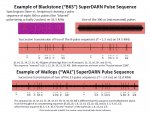Token
Member
I have thrown an example recording of the SuperDARN system on my YouTube channel.
This was recorded on March 30, 2020, at 1449 UTC, on 10500 kHz. The radar was pinging on that frequency for quite an extended period of time. Most often SuperDARN is frequency agile, bouncing form frequency to frequency in a given band. This one, setting on a given frequency for minutes at a time, was a great opportunity to grab and example for the YT channel.
T!
This was recorded on March 30, 2020, at 1449 UTC, on 10500 kHz. The radar was pinging on that frequency for quite an extended period of time. Most often SuperDARN is frequency agile, bouncing form frequency to frequency in a given band. This one, setting on a given frequency for minutes at a time, was a great opportunity to grab and example for the YT channel.
T!


